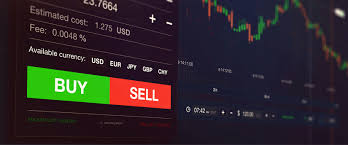Understanding Forex Trading Time Maximizing Your Profits 1770506204
Forex trading operates 24 hours a day, five days a week, but understanding when to trade is crucial for success in the market. The influence of Forex trading time on your trading strategies is paramount. With the tool of time, traders can capitalize on market volatility, liquidity, and currency pairs. In this article, we will delve into the significance of Forex trading hours and explore how it can affect your trading outcomes. You can learn more through forex trading time Trading Broker KH.
The Forex Market: A 24-Hour Market
The Foreign Exchange market, commonly known as Forex, is one of the largest and most liquid financial markets in the world. It operates 24/5, which means it is open continuously except during the weekends. This non-stop trading environment provides significant opportunities for traders, but it also introduces complexities regarding when to trade.
The Four Major Trading Sessions
Due to global time zones, the Forex market is divided into four major trading sessions: the Sydney session, the Tokyo session (Asian), the London session (European), and the New York session (North American). Understanding these trading sessions is critical for developing an effective trading strategy.
1. Sydney Session
The Sydney session opens the Forex trading week. It starts at 10 PM GMT and closes at 7 AM GMT. This session sees less volatility compared to other sessions but is essential for setting the tone for the week. While the Australian dollar is the main currency traded, traders can also find opportunities in other pairs influenced by the Asia-Pacific region.
2. Tokyo Session (Asian Session)

The Tokyo session runs from 12 AM GMT to 9 AM GMT. This session tends to see increased volatility, especially for pairs that include the Yen (JPY). As the Asian markets open and major economic data is released, traders can take advantage of price movements. Significant news releases can spark activity, so staying aware of the economic calendar is advisable.
3. London Session (European Session)
The London session is one of the most active periods in Forex trading, running from 8 AM GMT to 5 PM GMT. This session accounts for a large percentage of daily Forex trading volume. Major currency pairs like EUR/USD and GBP/USD witness heightened activity, providing ample opportunities for traders. The London session overlaps with both the Sydney and New York sessions, leading to increased volatility.
4. New York Session (North American Session)
The New York session opens at 1 PM GMT and closes at 10 PM GMT. This session is known for its volatility and impact on the Forex market, especially when it overlaps with the London session. As U.S. economic data is released, traders can expect significant price movements, particularly in pairs involving the USD.
Understanding Market Overlaps
One of the most critical aspects of Forex trading time is recognizing the overlaps between sessions. The overlapping periods typically provide the highest market volatility and liquidity which can lead to larger price movements. For example, when the London session overlaps with the New York session, the trading volume surges, offering traders more opportunities to capitalize on short-term price movements.
Choosing the Best Times to Trade

Identifying the best times to trade in the Forex market means being strategic. The preferred trading time may vary based on individual trading styles. Day traders may prefer to operate during high-volatility periods to capture small price movements, while swing traders might look for broader trends to develop over longer periods. Understanding when currency pairs are most active can significantly impact a trader’s success.
The Impact of News Releases
Economic news releases significantly impact currency values and are often correlated with specific trading times. Traders should pay attention to the economic calendar and align their trading strategies to the scheduled news releases. Volatility often increases before and after these releases, creating opportunities for profit, but also involving risk. Thus, traders should use proper risk management techniques when trading around news events.
Trading Strategies Based on Forex Time
Various trading strategies can be tailored based on Forex trading time. Some of the most popular strategies include:
- Scalping: This involves making quick trades to profit from small price changes. Scalpers typically focus on the London and New York session overlaps for maximum volatility.
- Day Trading: Day traders will often buy and sell currency pairs within the same day, taking advantage of short-term movements primarily during active market sessions.
- Swing Trading: Swing traders capitalize on medium-term market trends, which often develop after major news releases or during volatile periods in the market.
- Position Trading: This long-term strategy involves taking a position based on economic fundamentals and holding trades for an extended period, unaffected by time of day.
Conclusion
Understanding Forex trading time can be the key to unlocking the best trading opportunities in the vast forex market. Each trading session offers unique advantages, and recognizing the optimal times to trade based on market volatility and liquidity can help maximize profits. As traders navigate this dynamic market, they must remain aware of market sessions, news releases, and utilize effective trading strategies tailored to their trading style. With the right knowledge and approach, traders can successfully harness the power of time in Forex trading.

